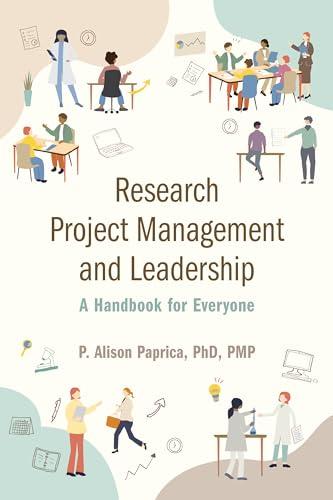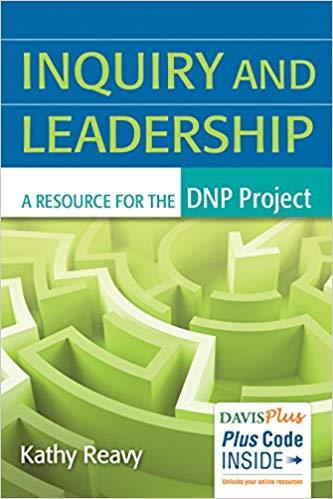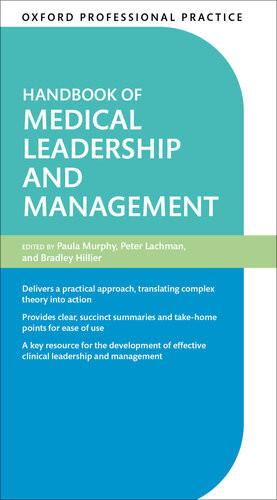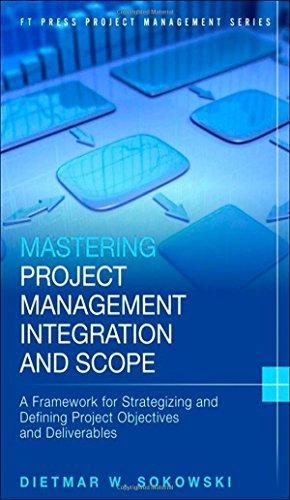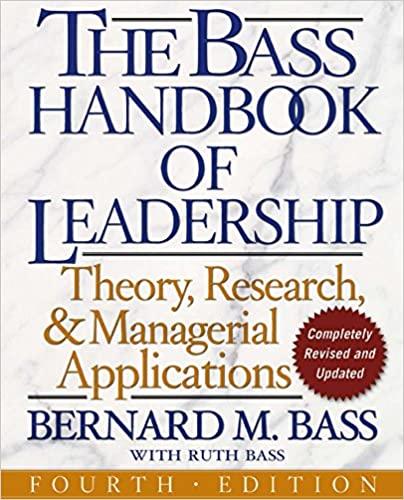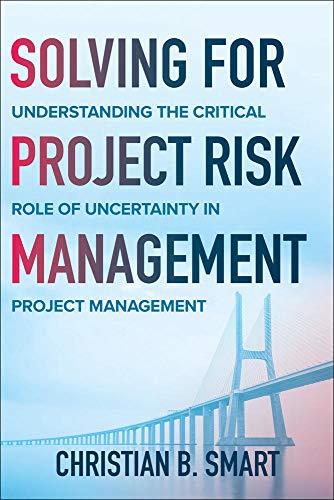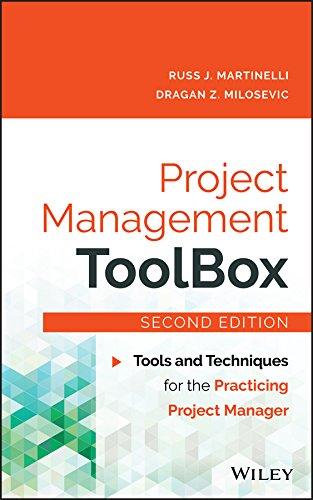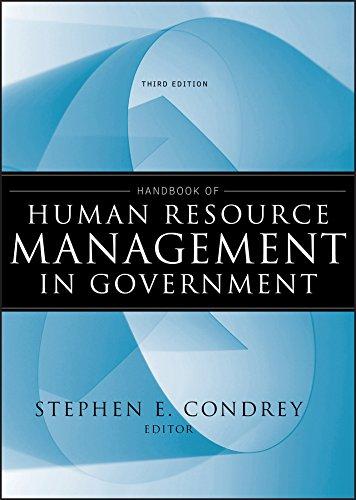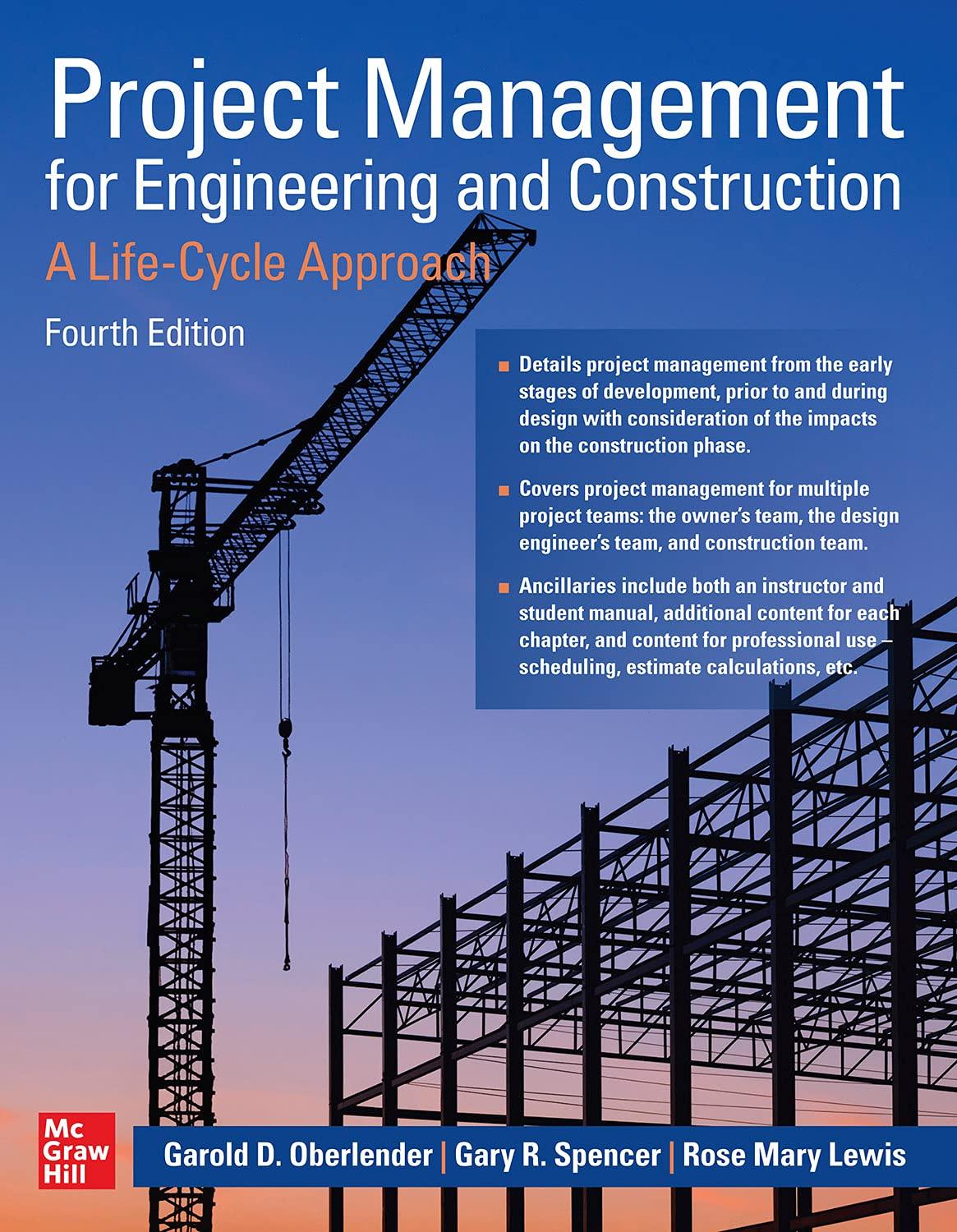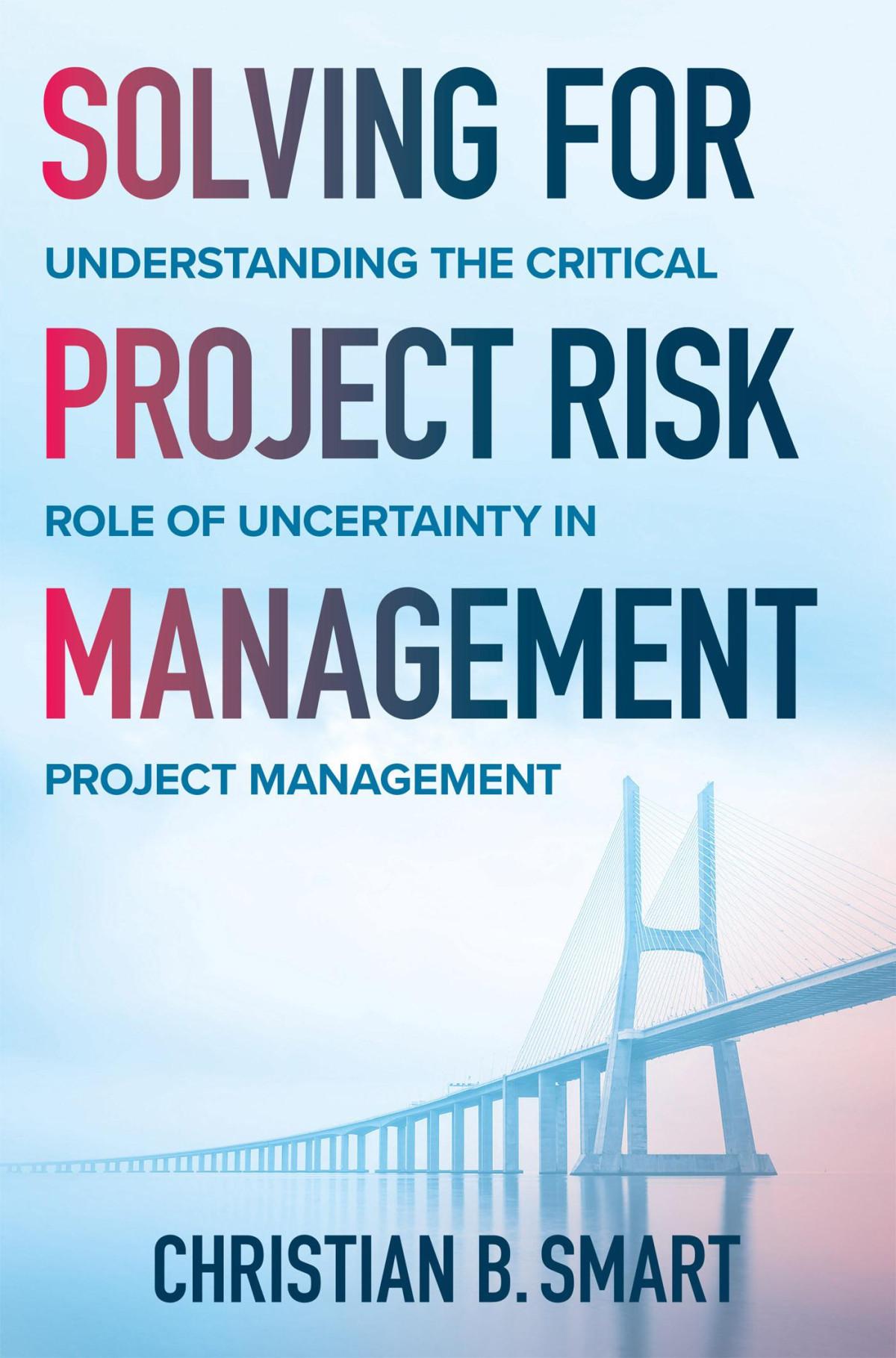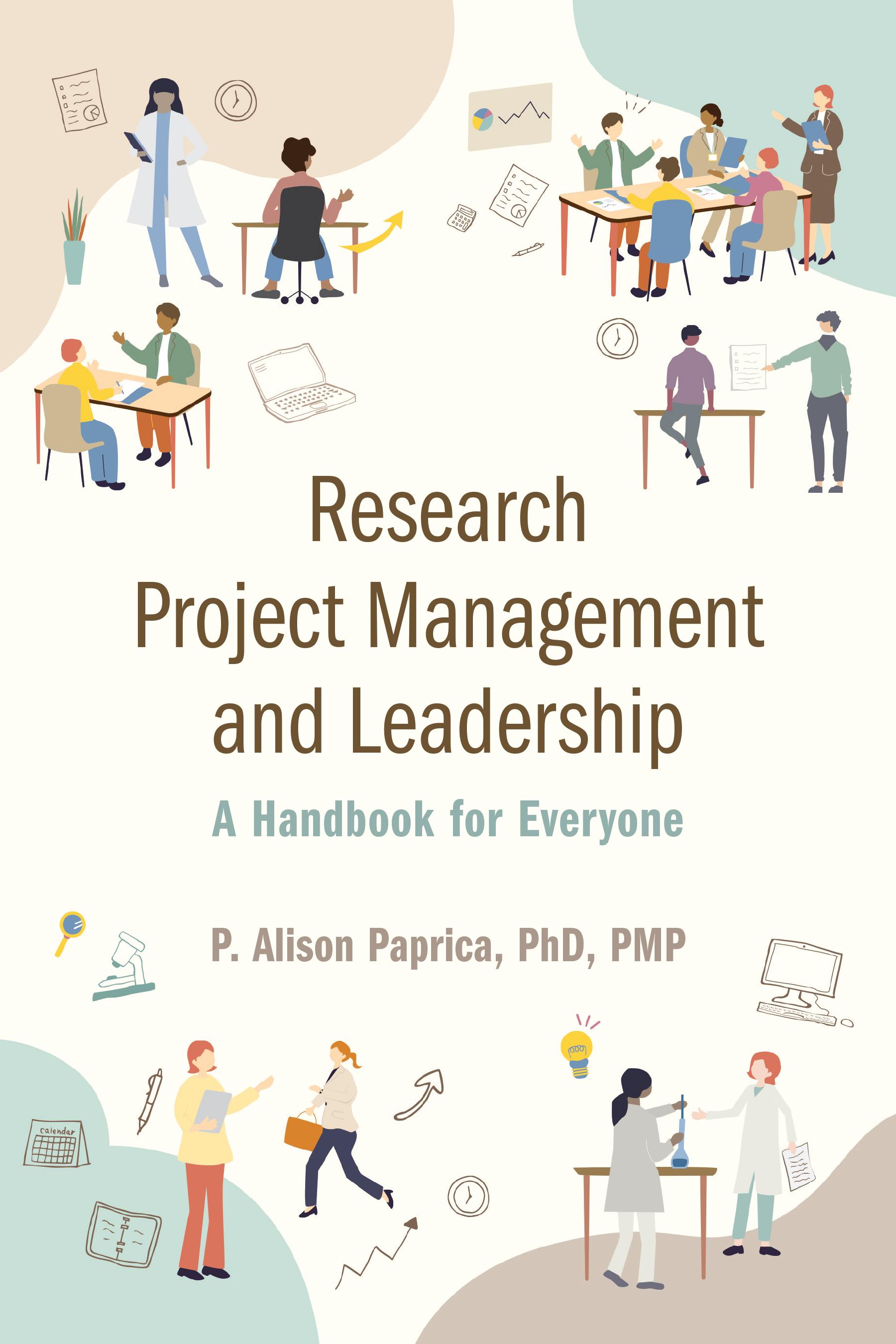A Handbook for Everyone
P. ALISON PAPRICA
UNIVERSITY OF TORONTO PRESS
Toronto Buffalo London
©
University of Toronto Press 2024
Toronto Buffalo London utorontopress.com
Printed in the USA
ISBN 978-1-4875-4451-5 (cloth)
ISBN 978-1-4875-4446-1 (paper)
ISBN 978-1-4875-4433-1 (EPUB)
ISBN 978-1-4875-4432-4 (PDF)
All rights reserved. The use of any part of this publication reproduced, transmitted in any form or by any means, electronic, mechanical, photocopying, recording, or otherwise, or stored in a retrieval system, without prior written consent of the publisher – or in the case of photocopying, a licence from Access Copyright, the Canadian Copyright Licensing Agency – is an infringement of the copyright law.
Library and Archives Canada Cataloguing in Publication
Title: Research project management and leadership : a handbook for everyone / P. Alison Paprica.
Names: Paprica, P. Alison, author.
Description: Includes bibliographical references and index.
Identifiers: Canadiana (print) 20230530796 | Canadiana (ebook) 20230530826 | ISBN 9781487544515 (cloth) | ISBN 9781487544461 (paper) | ISBN 9781487544324 (PDF) | ISBN 9781487544331 (EPUB)
Subjects: LCSH: Project management – Handbooks, manuals, etc. | LCSH: Leadership – Handbooks, manuals, etc. | LCGFT: Handbooks and manuals.
Classification: LCC HD69.P75 P37 2024 | DDC 658.4/04 – dc23
Cover design: Mary Beth MacLean Cover image: istock.com/kid-a
We welcome comments and suggestions regarding any aspect of our publications –please feel free to contact us at news@utorontopress.com or visit us at utorontopress.com.
Every effort has been made to contact copyright holders; in the event of an error or omission, please notify the publisher.
We wish to acknowledge the land on which the University of Toronto Press operates. This land is the traditional territory of the Wendat, the Anishnaabeg, the Haudenosaunee, the Métis, and the Mississaugas of the Credit First Nation.
University of Toronto Press acknowledges the financial support of the Government of Canada and the Ontario Arts Council, an agency of the Government of Ontario, for its publishing activities.
This handbook is dedicated to research leaders everywhere. I have been inspired by the ways in which they have stepped up, supported others, taken chances, led with compassion, stuck their necks out, and gone the extra mile. I admire them and thank them for their contributions to research.
This page intentionally left blank
Contents
List of Illustrations xiii
List of Tables xvii
List of Boxes xix
List of Leadership Advice Crosswalks xxi
Section 1: Overview of Research Project Management and Leadership 1
1.1 Research Requires Both Vision and Planning 1
1.2 Summary of the Literature 4
1.3 Origin and Content of This Handbook 9
1.4 Summary of Project Management Tools and Processes for Research 12
1.4.1 Distinguishing Projects from Operations 12
1.4.2 Project Management Tools and Processes 14
1.4.3 Overview of the Research Project Management Tools Presented in This Handbook 15
1.5 Main Themes from Research Leader Interviews 17
1.6 How to Use This Handbook 21
Section 2: Scoping and Planning Research Projects 25
2.1 Scope and the Work Breakdown Structure 25
2.1.1 Project Management Mindset of “Define, Then Deliver” 25
2.1.2 The Work Breakdown Structure as a Tool to Articulate Project Scope 26
2.1.3 Deliverable-Based Scoping Drives Activities to the Point at Which They Produce Something Tangible 30
2.1.4 Common Workstreams and Deliverables for Research Projects 31
2.1.5 Using the Work Breakdown Structure to Establish a Common Understanding of a Research Project’s Scope 34
2.2 Deliverable-Based Schedule 43
2.2.1 Using Work Breakdown Structure Deliverables to Create a Schedule That Covers the Project’s Entire Scope 43
2.2.2 Benefits of a Schedule 44
2.2.3 Steps for Developing a Deliverable-Based Gantt Chart for a Research Project 46
2.2.4 Schedule Compression 47
2.2.5 Avoiding Unnecessary Multitasking 53
2.3 Deliverable-Based Budget 56
2.3.1 The Budget as a Tool to Ensure Sufficient Funding for All Deliverables 56
2.3.2 Estimating the Costs for Common Research Budget Lines 60
2.3.3 Steps for Developing a Deliverable-Based Budget for a Research Project 63
2.4 Involving Stakeholders in Project Planning 65
2.5 Triple Constraint of Scope, Time, and Cost 69
Section 3: Transitioning from Research Project Planning to Implementation 72
3.1 Progressive and Iterative Elaboration of Project Details 72
3.2 Processes to Identify and Manage Risks 73
3.2.1 Distinguishing Risks from Issues and Opportunities 73
3.2.2 Identifying, Prioritizing, and Responding to Negative Risks for Research 74
3.2.3 Positive Risk Management 79
3.2.4 Research Project Risk Management Plan 80
3.3 Roles and Responsibilities 83
3.3.1 Importance of Understanding Who Will Do What on the Research Project Team 83
3.3.2 Work Breakdown Structure with the Leads’ Initials as a Tool for Identifying Workstream and Deliverable Leads 83
3.3.3 Intertwined Roles of the Principal Investigator and the Academic Research Project Manager 86
3.3.4Core Team 89
3.3.5 The RACI as a Tool to Define Multiple Roles 93
3.3.6 Building Capacity across the Research Project Team 96
3.4 Decision Making, Governance, and Oversight 99
3.4.1 Research Project Governance 99
3.4.2 Decision-Making Processes 103
3.4.3 Bringing Governance and Management Together 106
3.5 Using Project Management to Strengthen Grant Applications 110
Section 4: Implementing and Closing Research Projects 117
4.1Project Kickoff 117
4.2 Tracking and Driving Research Project Progress 121
4.3 Communications and Stakeholder Involvement during Implementation 127
4.3.1Communications Planning 127
4.3.2Status Reports 131
4.3.3Stakeholder Engagement 135
4.4 Preventing and Addressing Common Problems 138
4.5 Closing the Project and Capturing the Lessons Learned 142
Section 5: Cross-Cutting Topics 147
5.1 Running Effective Meetings 147
5.1.1 Value of Meetings 147
5.1.2 Role and Responsibilities of the Meeting Chair 147
5.1.3Research Meeting Agendas 149
5.1.4 Facilitation Techniques and Processes 152
5.2 Applying Project Management Tools and Processes to Research Programs, Operations, and Portfolios 156
5.3 Agile Approaches and Research Project Management 162
5.4 Adapting Research Project Management and Leadership Skills on the Basis of Context 165
5.4.1 Modifying Academic Research Project Management Skills for Other Sectors That Perform Research and Development 165
5.4.2 Applying the Guidance in This Handbook in Your Environment 170
Section 6: Interviews with Research Leaders 173
6.1 Elspeth Brown: Starting a New Leadership Role with a Listening Tour 174
6.2 Steini Brown: Research Leadership Should Focus on the Team, Not the Leader 178
6.3 Beth Coleman: Starting Up the University of Toronto Black Research Network 181
6.4 Aled Edwards: Learning Your Partners’ Culture through Immersion 184
6.5 Steve Farber: Leadership to Advance a Concept into a Codeveloped Research Agenda 186
6.6 Colleen Flood: Forward Thinking and Scenario Planning for Policies Related to Vaccination 189
6.7 Lorna MacDonald: Creating and Leading Two Productions of a Historically-Based Opera 194
6.8 Kim McGrail: Launching a New Pan-Canadian Network 197
6.9 Michael Schull: When a Clinician Scientist Is the CEO of a Research Institute with More than 200 Staff 200
6.10 Barbara Sherwood Lollar: Understanding That Research Operations Are Fundamentally Entrepreneurial 204
6.11 Molly Shoichet: Supporting Students in Learning Their Own Lessons 208
6.12 Arjumand Siddiqi: Contributing as a Researcher When You’re Not Certain That You’re Right 211
6.13 Zaïna Soré: Working with Partners to Take Research into Practice 214
6.14 Sharon Straus: Using Research Skills and Methods to Achieve Change 217
6.15 Mohamad Tavakoli-Targhi: Creating Vibrant Research Communities in the Humanities 221
6.16 Jutta Treviranus: Shifting the Culture of Research Funding to More Inclusive Approaches 223
6.17 David Wolfe: Distinct Leadership Requirements for Large Research Grants with Business Partners 228
6.18 Stefaan Verhulst: Research Entrepreneurship to Mobilize a New International Network 232
6.19 Rich Zemel: Working with Industry to Create a New Machine Learning Research Institute 235
Appendices – Examples of Light-Touch Project Management Documents for Fictional and Generic Research Projects 241
Appendix A: Scope of a Fictional Graduate Student Thesis Project Expressed in Terms of Deliverables 243
Appendix B: Scope of a Fictional Visual Arts Exhibition Project Expressed in Terms of Deliverables 245
Appendix C: Scope of a Fictional Systematic Review Project Expressed in Terms of Deliverables 247
Appendix D: Three Pages for Planning and Managing a Fictional Seniors’ Health Clinics Evaluation Project 249
Appendix E: Five-Page Plan for a Fictional Pollution Research Project 253
Appendix F: Example Full Project Plan for a Fictional Natural Sciences Research Project That Is Part of a Multidisciplinary Program 260
Bibliography 271
Index 275
About the Author 285
This page intentionally left blank
Illustrations
1.1 Continuum of Certainty for Research Projects (with Exceptions, of Course) 3
1.2 Everyone Has a Role to Play in Research Leadership and Management 10
1.3 Fictional Stock Chart as an Example of a Tool Used in the Financial Services Sector 15
1.4 20,000-Foot View of High-Impact Light-Touch Project Management Tools 17
2.1 Deliverables as Stakes in the Ground for Research Project Planning and Implementation 27
2.2 WBS for a Generic Research Project 29
2.3 WBS for a Generic Research Project with a Training and Capacity-Building Workstream 36
2.4 WBS for a Fictional Pollution Research Project 38
2.5 WBS for a Fictional Seniors’ Health Clinics Evaluation Project 39
2.6 Deliverable-Based Gantt Chart for a Fictional Pollution Research Project 45
2.7 Parametric Estimates of Deliverable Duration 48
2.8 Fast-Tracked Deliverable-Based Gantt Chart for a Fictional Pollution Research Project with Fast-Tracking in Year 1 to Ensure Time for Quality Final Deliverables at the End of the Project 50
2.9 Risky Deliverable-Based Gantt Chart for a Fictional Pollution Research Project with Relaxed Schedule in Year 1 51
2.10 Deliverable-Based Gantt Chart for a Fictional Seniors’ Health Clinics Evaluation Project 54
2.11 Downside of Multitasking 55
2.12 Parametric Estimate of Deliverable Costs 63
2.13 Scope, Schedule, and Budget Are Related through the Triple Constraint 70
3.1 Relationship between Risk Responses and the Likelihood and Impact of Negative Risks 79
3.2 Representation of Two Different Teams’ Negative Risk Tolerance 80
3.3 WBS for a Fictional Pollution Research Project with Lead Initials Added 85
3.4 Relationship among the Research Project Team, Core Team or Teams, and Research Executive Committee 91
3.5 Examples of Hierarchy in Research Project Governance and Management 100
4.1 Project Phases and Resource Consumption 118
4.2 Using the Tracking Sheet to Monitor Progress and Highlight Accomplishments and Changes 124
4.3 Quarter-Page Status Report for a Generic Research Project 131
4.4 Two-Page Status Report for a Fictional Seniors’ Health Clinics Evaluation Project 132
5.1 Work Breakdown Structure for a Fictional Program of Research for a Social Services Intervention Pilot 158
5.2 Work Breakdown Structure for the Operations of a Fictional Virtual Research Network or Center 159
5.3 Work Breakdown Structure for a Fictional New Investigator’s Research Portfolio 160
5.4 Work Breakdown Structure for Fictional Ongoing Applications for Research Funding 164
A.1 Work Breakdown Structure for a Fictional Graduate Student Thesis Project 244
B.1 Work Breakdown Structure for a Fictional Visual Arts Exhibition Project 246
C.1 Work Breakdown Structure for a Fictional Systematic Review Project 248
D.1 Work Breakdown Structure for a Fictional Seniors’ Health Clinics Evaluation Project 250
D.2 Deliverable-Based Gantt Chart for a Fictional Seniors’ Health Clinics Evaluation Project 251
D.3 Microsoft Excel Tracking Sheet for a Fictional Seniors’ Health Clinics Evaluation Project (June 2022 Update) 252
E.1 Work Breakdown Structure with Leads’ Initials for a Fictional Pollution Research Project 254
E.2 Deliverable-Based Gantt Chart for a Fictional Pollution Research Project 255
F.1 Fictional RaCOTE Project in Context 261
F.2 Work Breakdown Structure for the Fictional RaCOTE Project 263
F.3 Deliverable-Based Gantt Chart for the Fictional RaCOTE Project 265
This page intentionally left blank
Tables
1.1 Countries with More Than US$10 Billion Annual Higher Education R&D 3
1.2 Contrasting Projects and Operations 14
2.1 Deliverable-Based Budget for a Fictional Pollution Research Project 58
2.2 Deliverable-Based Budget for a Fictional Seniors’ Health Clinics Evaluation Project 59
3.1 Example Negative Risk Management Plan 75
3.2 Example of a Partially Completed RACI for a Generic Research Project 94
3.3 Unrealistic High-Level Budget for a Fictional Large Research Project 113
3.4 Realistic High-Level Budget for a Fictional Large Research Project 114
4.1 Example Kick-Off Meeting Agenda 120
4.2 Blank Tracking Sheet Template for Research Projects 123
4.3 Example Research Project Communications Plan for a Generic Research Project 129
4.4 Example Research Stakeholder Engagement Plan for a Generic Research Project 136
5.1 Example Research Meeting Agenda with Decision Items 151
5.2 Tracking Sheet Template for Research Programs, Operations, or Portfolios 162
5.3 Differences in Research Project Management Practices Depending on the Certainty of the Project 167
5.4 Existing versus Recommended Content for a Research Project Plan or Program Plan 172
E.1 Deliverable-Based Budget for a Fictional Pollution Research Project 256
E.2 RACI for a Fictional Pollution Research Project 256
E.3 Negative Risk Management Plan for a Fictional Pollution Research Project 257
F.1 Deliverable-Based Budget for the Fictional RaCOTE Project 266
F.2 Top Negative Risks and Responses for the Fictional RaCOTE Project 266
F.3 Communications Plan for the Fictional RaCOTE Project 268
Boxes
1.1 A Vision and a Task Proverb 1
1.2 Types of Research and Development 2
1.3 Two Definitive Resources: The PMBOK® Guide and Managing Successful Projects with PRINCE2® 4
1.4 Findings from a Literature Review Focused on Academic Research Project Management and Leadership 7
1.5 What Is Light-Touch Project Management? 16
1.6 Main Themes from Research Leader Interviews 18
1.7 Suggestions for Different Research Project Team Members’ Use of This Handbook 22
1.8 Microsoft Office Software Features That Can Be Used to Create and Populate Project Management Tools 24
2.1 Project Management Mindset: “Define, Then Deliver” 25
2.2 High-Level Description of a Fictional Pollution Research Project 40
2.3 High-Level Description of a Fictional Seniors’ Health Clinics Evaluation Project 40
2.4 Work Breakdown Structure Dos and Don’ts 42
2.5 Options for Compressing the Research Project Schedule 52
3.1 Examples of Negative Risks and Responses to Them 78
3.2 Examples of Positive Risks and Responses to Them 81
3.3 When the Research Project Team Consists of One Person 90
3.4 Research Executive Committees for Large Projects and Initiatives 92
3.5 Professional Attributes and Competencies 98
3.6 Examples of Potentially Contentious Research Project Decisions 104
3.7 Two Common Options for Consensus-Based Decision Making for Research 105
3.8 Sections for a Terms-of-Reference Document 107
3.9 Example Research Project Governance and Management Plan 108
4.1 Possible Responses to Things That May Change between Grant Application Submission and the Start of a Research Project 118
4.2 Research Project Closure Activities 143
5.1 Tips for Chairing Research Meetings 148
5.2 Example Marked-Up Meeting Agenda with Notes and Action Items 153
Overview of Research Project Management and Leadership
1.1 RESEARCH REQUIRES BOTH VISION AND PLANNING
Research, by its nature, tends to focus on the vision. It is about the potential to generate knowledge or improved products, processes, and services. For hundreds of years, however, people have realized that a vision alone is not enough; planning is also required (see Box 1.1). That is why this handbook presents a combination of advice from 19 research leaders and light-touch versions of globally accepted project management tools and processes to support research team members in planning and implementing projects to achieve their vision.
“Research” is a broad term that can include everything from the generation of new theories at universities to experimental development performed by businesses to refine or improve commercial products (Box 1.2). This handbook focuses on guidance for academic research – sometimes referred to as higher education research and
BOX 1.1. A VISION AND A TASK PROVERB
A vision without a task is but a dream. A task without a vision is drudgery. A vision and a task are the hope of the world. – Anonymous (often attributed to an unknown church in Sussex, England, c. 1730)
BOX 1.2. TYPES OF RESEARCH AND DEVELOPMENT
Basic research is experimental or theoretical work undertaken primarily to acquire new knowledge of the underlying foundation of phenomena and observable facts, without any particular application or use in view.
Applied research is original investigation undertaken in order to acquire new knowledge. It is, however, directed primarily toward a specific, practical aim or objective.
Experimental development is systematic work, drawing on knowledge gained from research and practical experience and producing additional knowledge, which is directed to producing new products or processes or to improving existing products or processes.
Source: Organisation for Economic Co-operation and Development (2015).
development (HERD) – which includes research performed at universities, colleges, research hospitals, and research institutes and centers that are under the control of tertiary education institutions (Organisation for Economic Co-operation and Development [OECD], n.d.-b). Academic research is primarily funded by governments and plays an important role in innovation systems by ensuring the provision of new knowledge from basic and applied research that businesses are unlikely to conduct because of the non-appropriable, public good, intangible character of knowledge and the risky nature of research (OECD, 2012).
There is a massive international investment in academic research each year. The OECD (n.d.-a) reports that more than US$300 billion of research is performed annually by the higher education sector, most of which is invested in eight countries that each have more than US$10 billion of annual HERD investment (see Table 1.1).
The specific objectives of the funders of academic research vary, but they generally include the generation of new foundational knowledge and research findings that will directly or indirectly address societal, economic, and security challenges (OECD, 2016). Of course, there are exceptions, but, overall, research has higher
Table 1.1.
Countries with More Than US$10 Billion Annual Higher Education R&D
R&D Performed by
D = difference in methodology; E = estimated value; P = provisional value; R&D = research and development.
Source: Organisation for Economic Co-operation and Development (n.d.-a).
uncertainty than other kinds of work. For example, at the beginning of a research project there may not be certainty about what the research questions will be, what methodology will be used, or whether the project will yield any conclusive results. This uncertainty is unavoidable and associated with the open and inquisitive nature of research. The uncertainty is highest for investigator-driven basic research, which is conducted to generate knowledge without any particular application in mind (Figure 1.1).
Figure 1.1. Continuum of Certainty for Research Projects (with Exceptions, of Course)
1.2 SUMMARY OF THE LITERATURE
Volumes have been written about project management and leadership. Among the thousands of project management books and textbooks that exist, two stand out because they guide the practice of millions of practitioners: the Standard for Project Management and a Guide to the Project Management Body of Knowledge (PMBOK® Guide) (Project Management Institute, 2021) and Managing Successful Projects with PRINCE2® (Axelos, 2017; see Box 1.3). These resources are complemented by many academic publications, including broadscope journals (e.g., International Journal of Project Management, Project Management Journal, International Journal of Project Organization and Management, Project Leadership and Society) and journals focused on specific sectors (e.g., International Journal of Managing Projects in Business, International Journal of Information Technology Project Management). Within this large project management and leadership literature, only a small number of publications focus specifically on academic research; however, there is complementary literature focused on research and development (R&D), including academic journals such as R&D Management and Higher Education Research and Development, and thousands of books written about various aspects of R&D.
BOX 1.3. TWO DEFINITIVE RESOURCES: THE PMBOK GUIDE AND MANAGING SUCCESSFUL PROJECTS WITH PRINCE2
Two books are recognized as definitive resources for the practice of project management: The Standard for Project Management and a Guide to the Project Management Body of Knowledge (PMBOK Guide), published by the US-based Project Management Institute (PMI; 2021) and Managing Successful Projects with PRINCE2 (Axelos, 2017), published by the Stationary Office and supported by Axelos as joint venture with the UK government. PMI has more than one million certified project management professionals (PMPs), Axelos has more than one million PRINCE2 certified project managers, and both PMI and Axelos offer multiple different project management–related certification programs. The PMBOK Guide and Managing
Successful Projects with PRINCE2 each provide hundreds of pages of guidance and are continuously reviewed and updated by thousands of contributing project managers.
The main difference between the two resources is that the PMBOK Guide presents a framework of standards along with many options for tools and processes that can be applied to plan and manage projects, whereas Managing Successful Projects with PRINCE2 presents a specific but flexible method for planning and managing projects. The two resources use slightly different terminology, but both draw on and bring together project management tools and processes that predate the publication of the PMBOK Guide and PRINCE2 resources, such as the work breakdown structure, Gantt charts, and responsibility assignment matrices. By their nature, the PMBOK Guide and Managing Successful Projects with PRINCE2 are general resources that do not provide detailed guidance on, or examples of, the application of project management in research or other sectors. They both encourage the tailoring of project management to meet the needs of individual projects and different contexts.
Despite the large volume of written material, it is extremely challenging to identify publications focused specifically on academic research project management and leadership because most of the project management and leadership literature focuses on non-academic projects. On top of that, there are no standardized search terms that distinguish between publications focused on the leadership and management of academic research and publications that present academic research on project management in other sectors.
As part of the preparation of this handbook, a literature review was performed to identify scholarly publications focused on the leadership and management of academic research. The first step involved searching Scopus and Google Scholar using combinations of the terms “management,” “project management,” “leadership,” and “academic research” to find articles that might be relevant, followed by a review of abstracts and full text to identify the subset of articles that focused on the leadership and management of academic research. From there, the snowball search method was used to identify additional relevant
publications that cited, or were cited by, publications that had been confirmed to be relevant. This approach identified two literature reviews focused on academic research project management (Philbin, 2017; vom Brocke & Lippe, 2015), one literature review focused on academic research leadership (Anthony & Antony, 2017), and a small number of additional articles that warranted inclusion either because they were not included in previously published literature reviews or because relevant details in them were less emphasized in the published literature reviews.
To complement the peer-reviewed and indexed literature, a general internet search for resources related to academic research project management and leadership was performed, including a search of guidance provided by research funders. This identified one workshop report (Lemieux-Charles, 2005); one working group report (Canadian Health Services and Policy Research Alliance [CHSPRA], 2015); and several websites with program guides, guidance, reports, and case studies (Advance HE, n.d.; Canada Foundation for Innovation, n.d.; Canadian Institutes of Health Research [CIHR], 2016, 2017; European Commission, 2002; Memorial University of Newfoundland, 2018; Miller, 2019; OECD, n.d.-b). Note that internet search results change as new materials are posted, and research funders may have program guides and other relevant materials that are accessible only to researchers who register with them. Therefore, although the institutional and research funder internet resources cited here may have some helpful information for readers, they are included primarily to illustrate the existence of relevant online materials and to prompt readers to seek guidance from their own institutions and funders.
Taking all of the published material focused on the management and leadership of academic research together, two things can be said:
1 Not much has been published on the topic relative to the large investments made in academic research.
2 The degree of consistency of findings and recommendations is high, including consensus that project management and leadership are different for academic research than they are for other sectors (see Box 1.4).
BOX 1.4. FINDINGS FROM A LITERATURE REVIEW FOCUSED ON ACADEMIC RESEARCH PROJECT MANAGEMENT AND LEADERSHIP
• Many articles focused on the management or leadership of academic research cite or paraphrase Ernø-Kjølhede’s (1999) statement from more than 20 years ago: “The management of a research project is full of uncertainty and complexity. Research has substantial elements of creativity and innovation and predicting the outcome of research in full is therefore very difficult.”
• Additional major differences between general project management and research project management include the following: research project goals may be abstract and subject to change; research project team members have competing and possibly conflicting obligations, such as teaching and other projects; the purpose of a research project is to generate knowledge and the best achievable result (which may be different than the planned result); too much planning and control may be counterproductive for research projects; and the leadership and integration of research is more important than the rigid management of research project tasks (Huljenic et al., 2005; Riol & Thiullier, 2015).
• Authors have also noted that leadership of academic research differs from traditional leadership because of unique factors associated with the university context, the fact that leadership may be distributed across team members who come from different disciplines and sectors, and the graduate student–supervisor relationship (Anthony & Antony, 2017).
• Much of the work of academic research projects is performed by graduate students who need to be supported and provided with opportunities to learn (Lemieux-Charles, 2005; Riol & Thiullier, 2015).
• In addition to serving as the research lead and supervisor, the principal investigator of an academic research project may take on project management responsibilities (e.g., managing contracts, cost, time, scope, communications, and stakeholders), often without training (Cassanelli et al., 2017; Lemieux-Charles, 2005).
• Where there are dedicated research project managers (or equivalents, i.e., people with other titles who perform project management functions), they may be faced with resistance to basic project management processes and lack the ability to affect the behavior of
